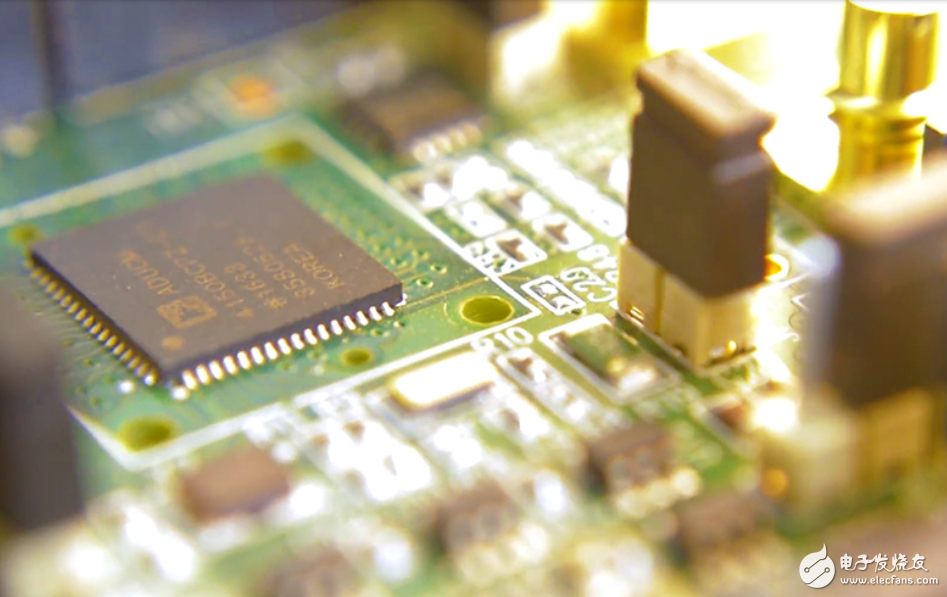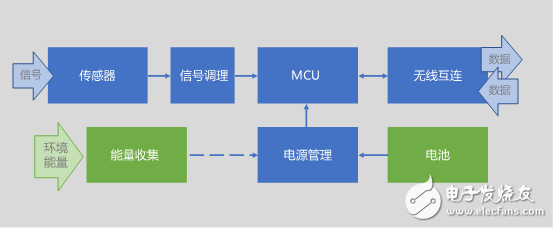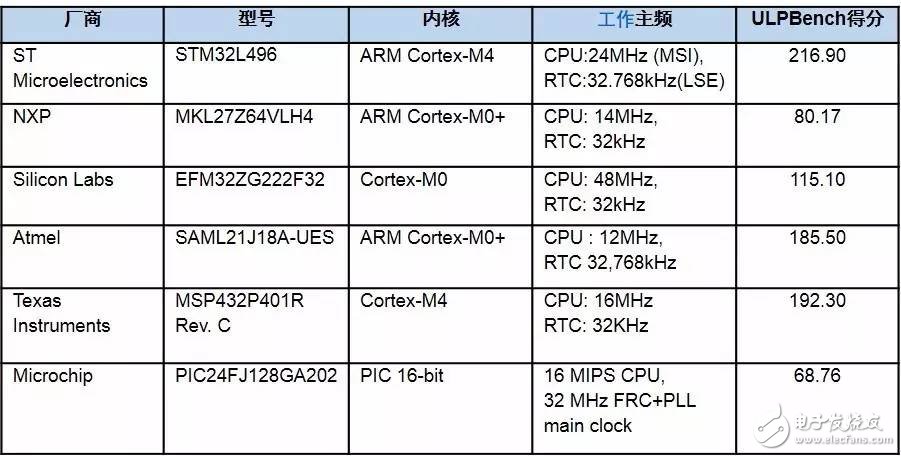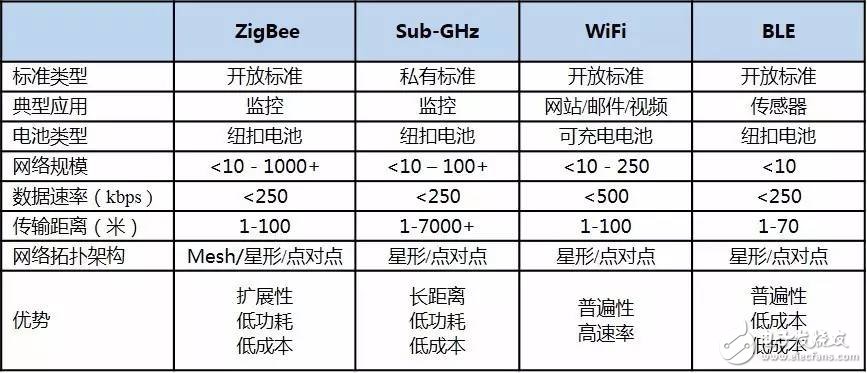Figure 1, IoT client device system block diagram From the system block diagram of the IoT device, the MCU is at the core position; from the power consumption point of view, it is also the "power tiger" with the largest power consumption. The 8-bit MCU power consumption is low, but after all, the performance is limited, so the 32-bit MCU is the protagonist in the IoT device. Currently in the 32-bit general-purpose MCU field, the CPU core of the ARM Cortex-M series architecture dominates. From M0, M0+, M3, M4 to M7, the higher the serial number, the higher the performance and the greater the power consumption. Therefore, according to the application scenario of the IoT device, it is the primary criterion to select a CPU core with a power consumption performance that is “just rightâ€. However, there are many factors that determine the overall power consumption of the MCU. In addition to the power consumption of the CPU core itself, at least three factors must be considered: whether there are various power management mode settings, the CPU core and the circuit that does not need to work can be put to sleep; There is a flexible clock management system that schedules individual functional circuits as needed; whether there are smarter, lower-power peripheral circuits that help the CPU core share the work. In fact, the core idea of ​​these factors is: no sleep, activation on demand, avoiding air consumption. In order to fully understand the low-power performance of MCU and make a correct judgment, in addition to the data sheet and experience design of the device, there are also third-party evaluations available for reference. For example, the EEMBC Alliance specializes in measuring the low-power characteristics of embedded microcontrollers. Designed ULPBench score. Although some people think that the result of this rating is debatable, it is still a benchmark to measure the overall low power consumption of the MCU. Table 1, the industry mainstream MCU product score in ULPBench In sensor selection, developers usually have two choices: discrete sensors or integrated sensors. Separately, the former has more advantages in terms of cost and power consumption, but from the perspective of overall system power consumption, integrated sensor components are a good choice. Because in the integrated sensor device, the signal conditioning circuit (such as ADC) is usually integrated, and the pre-processed signal is directly transmitted to the MCU through a data interface such as SPI or I2C, thereby reducing the load of the MCU data processing. Some sensor devices also integrate signal processing circuits, such as a low-power CPU core, to form a more complete sensor hub, simple calculations, and further reduce the "disturbance" of the main MCU. These strategies will help reduce the overall energy consumption of the system. Another important factor affecting the power consumption of IoT products is the wireless interconnect function. There are too many wireless interconnect protocols available on the market, from proprietary Sub-GHz protocols to well-known open standards such as Wi-Fi, BLE, ZigBee, and the rapidly growing low-power WAN LPWAN protocol in recent years ( Such as LoRa, Sigfox, NB-IoT, etc.). The power consumption of wireless communication is related to factors such as network size, topology, reliability, and data throughput. Generally speaking, the more complicated the topology and the larger the data throughput, the greater the power consumption. For example, the star WiFi network consumes much higher power than the sub-GHz wireless communication of point-to-point communication; the ZigBee protocol is also adopted. Star networks are definitely less energy intensive than Mesh networks. Therefore, the choice of wireless interconnection protocol for IoT devices is highly correlated with the application scenario. Developers need to consider the actual needs and future scalability to determine the appropriate wireless technology. On this basis, select low power consumption. The best performing components. Power management devices are an integral part of IoT systems. Whether you choose an LDO linear regulator or a DC-DC converter, or a PMIC that provides multi-rail voltage output, high efficiency is the preferred feature. In addition, power management devices for IoT products, especially in applications related to energy harvesting technology, also need to have low quiescent current characteristics - such as TI's related products, the nominal quiescent current value can reach 300nA - Minimize the standby power consumption of the device. In October 2016, cyber hackers hijacked a large number of IoT devices, such as cameras, and launched large-scale DDoS attacks on North American networks. This reminds people again that the security issues of IoT devices cannot be ignored. For IoT devices, enhanced security features also mean greater power consumption. For example, if the encryption hardware is not configured inside or outside the MCU, the encryption and decryption work will have to consume the computing resources of the MCU, resulting in more power consumption. . Using a more reliable asymmetric encryption algorithm requires more power than a symmetric encryption algorithm. Therefore, the power consumption budget associated with security is also a part that must be considered. By connecting the above factors in tandem, we can draw a complete picture of the power consumption of the IoT device. On this basis, we must carefully craft low-power products that can withstand the market and user exams. Table 2, Comparison of Major Wireless Interconnection Protocols VEIIK Vape Pod Kit is so convenient, portable, and small volume, you just need to take them out of your pocket and take a puff, feel the cloud veiik vape pod mod kit,veiik vape pod system,veiik vape pod kit with seed starting system,veiik vape pod kit plus,veiik vape pod kit disposable Ningbo Autrends International Trade Co.,Ltd. , https://www.mosvape.com
Unconsciously, we are already in the ocean of the Internet of Things. It is widely accepted that by 2020, the total number of access to IoT devices worldwide will reach 30-50 billion. In the face of this massive amount of equipment, maintenance becomes a onerous task, which requires the Internet equipment to be reliably "skinny" while the power consumption is low enough that a battery (or using energy harvesting technology) can last long enough. Therefore, the word "low power consumption" has been placed in a high priority position in the design of IoT client devices. This also allows developers to be cautious in the selection of components, bearing in mind the following "military regulations" that have to be kept. 


of smoke, and the fragrance of fruit surrounding you. It's so great.
We are the distributor of the VEIIK Vape brand, we sell veiik e cigarette, veiik vape pen, veiik disposable vaporizer, and so on.
We are also China's leading manufacturer and supplier of Disposable Vapes puff bars, disposable vape kit, e-cigarette, vape pens, and e-cigarette kit,
and we specialize in disposable vapes, e-cigarette vape pens, e-cigarette kits, etc.